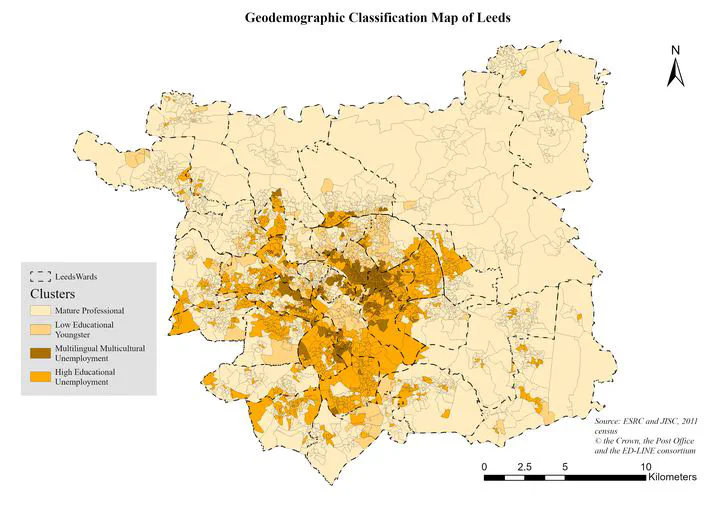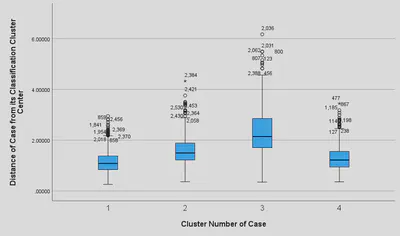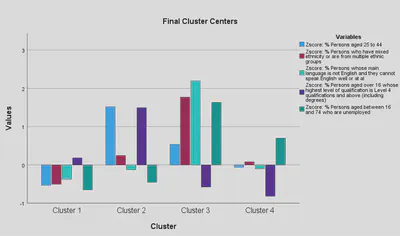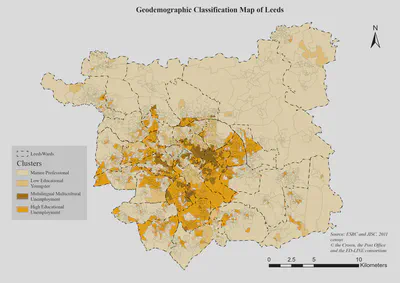Geodemographic Classification for Social Impact: Targeting Youth Support in Leeds

This project aimed to solve a real-world problem for the Leeds-based charity, Learning Partnerships. They needed to pinpoint neighbourhoods with the highest concentration of young, disadvantaged adults to effectively deploy a new support initiative. My goal was to transform raw census data into an actionable, location-based strategy for them.
My approach involved creating a bespoke geodemographic classification. I began by strategically selecting key census variables that act as proxies for disadvantage, such as unemployment and low educational attainment. Using SPSS, I applied the K-means clustering algorithm to segment all of Leeds’ neighbourhoods into four statistically distinct groups. The final step was to join this classification data to a map in ArcGIS Pro, allowing for a clear geographic visualization of the results.

